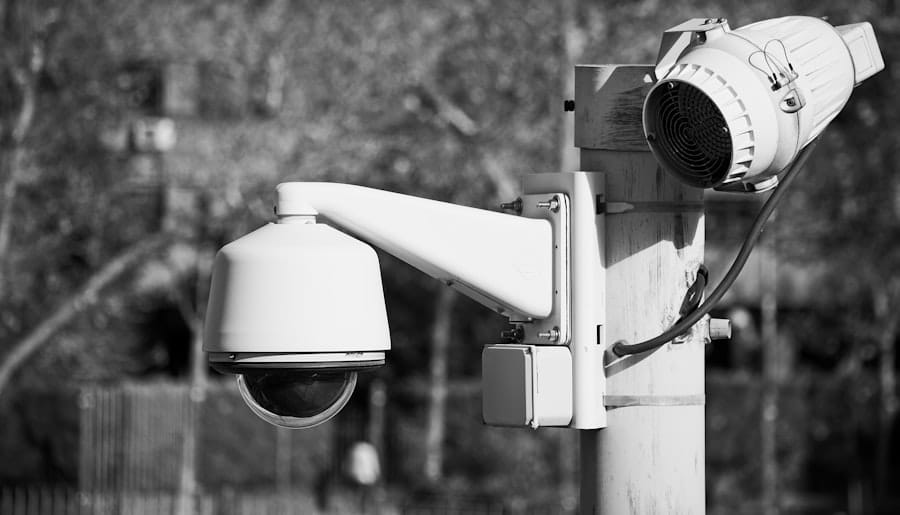Distributed systems represent a paradigm shift in computing, where multiple independent components work together to achieve a common goal. Unlike traditional centralized systems, where a single server handles all requests, distributed systems leverage a network of interconnected nodes that can be geographically dispersed. This architecture allows for enhanced scalability, fault tolerance, and resource sharing.
The rise of cloud computing, the Internet of Things (IoT), and big data analytics has further propelled the adoption of distributed systems across various industries, from finance to healthcare. The fundamental principle behind distributed systems is the ability to coordinate and manage resources across multiple nodes effectively. Each node in a distributed system can operate independently, yet they communicate and synchronize with one another to ensure consistency and reliability.
This decentralized approach not only improves performance but also provides resilience against failures. For instance, if one node goes down, the system can continue functioning by redistributing tasks among the remaining nodes. As organizations increasingly rely on distributed architectures to handle vast amounts of data and complex computations, understanding the intricacies of these systems becomes paramount.
Key Takeaways
- Distributed systems face challenges like scalability, fault tolerance, and security.
- AI enhances resource allocation and optimizes system performance in distributed environments.
- AI techniques improve fault detection and enable faster recovery in distributed systems.
- Security and threat detection in distributed systems are strengthened through AI-powered methods.
- Future trends point to deeper integration of AI for predictive analytics and smarter distributed system management.
Challenges in Distributed Systems
Despite their advantages, distributed systems come with a unique set of challenges that can complicate their design and operation. One of the most significant issues is network latency, which can affect communication between nodes. In a distributed environment, the time it takes for data to travel between nodes can lead to delays in processing and response times.
This latency can be exacerbated by factors such as network congestion, varying bandwidth, and the physical distance between nodes. As a result, developers must implement strategies to minimize latency and ensure efficient data transfer. Another challenge is maintaining data consistency across distributed nodes.
In a centralized system, data integrity is easier to manage since all operations occur in a single location. However, in a distributed system, multiple nodes may attempt to read or write data simultaneously, leading to potential conflicts and inconsistencies. Techniques such as consensus algorithms, like Paxos or Raft, are often employed to achieve agreement among nodes on the state of the system.
These algorithms help ensure that all nodes have a consistent view of the data, but they can introduce additional complexity and overhead.
Role of AI in Distributed Systems

Artificial Intelligence (AI) has emerged as a transformative force in the realm of distributed systems, offering innovative solutions to some of the inherent challenges these systems face. By leveraging machine learning algorithms and advanced analytics, AI can enhance decision-making processes within distributed environments. For instance, AI can analyze patterns in data traffic and node performance to optimize resource allocation dynamically.
This capability allows systems to adapt to changing workloads and user demands in real-time, improving overall efficiency. Moreover, AI can facilitate better communication between nodes by predicting potential bottlenecks or failures before they occur. By analyzing historical data and current system metrics, AI models can identify trends that may indicate an impending issue.
This proactive approach enables system administrators to take corrective actions before problems escalate, thereby enhancing the reliability and robustness of distributed systems. As AI continues to evolve, its integration into distributed architectures is likely to deepen, leading to smarter and more resilient systems.
AI-Driven Resource Allocation and Optimization
Resource allocation is a critical aspect of managing distributed systems effectively. With numerous nodes operating concurrently, ensuring that each node has access to the necessary resources—such as CPU power, memory, and storage—can be challenging. AI-driven resource allocation techniques utilize machine learning algorithms to analyze usage patterns and predict future resource needs based on historical data.
This predictive capability allows for more efficient distribution of resources across the network. For example, consider a cloud service provider that hosts applications for multiple clients. By employing AI algorithms that monitor resource consumption in real-time, the provider can dynamically allocate resources based on demand fluctuations.
If one application experiences a sudden spike in traffic while another sees a decrease, the AI system can automatically reallocate resources to ensure optimal performance for all applications. This not only enhances user experience but also maximizes resource utilization, reducing operational costs. Additionally, AI can optimize load balancing across distributed systems by intelligently distributing workloads among available nodes.
Traditional load balancing techniques often rely on static rules or heuristics that may not account for real-time conditions. In contrast, AI-driven approaches can continuously learn from system performance data and adjust load distribution strategies accordingly. This adaptability ensures that no single node becomes overwhelmed while others remain underutilized, leading to improved system responsiveness and efficiency.
AI-Enabled Fault Detection and Recovery
Fault detection and recovery are paramount in maintaining the reliability of distributed systems. Given their decentralized nature, identifying failures can be more complex than in centralized architectures. AI plays a crucial role in enhancing fault detection mechanisms by analyzing system logs and performance metrics to identify anomalies indicative of potential failures.
Machine learning models can be trained on historical failure data to recognize patterns that precede system outages or performance degradation. For instance, an AI system might monitor various metrics such as CPU usage, memory consumption, and network latency across all nodes in a distributed environment.
This early detection allows system administrators to intervene before issues escalate into significant outages. Once a fault is detected, AI can also facilitate recovery processes by automating remediation actions. For example, if a node becomes unresponsive due to high resource consumption, an AI-driven system could automatically redistribute workloads from the affected node to others in the network while initiating recovery protocols for the failed node.
This level of automation not only reduces downtime but also minimizes the need for manual intervention, allowing IT teams to focus on more strategic initiatives.
AI-Powered Security and Threat Detection

As distributed systems become increasingly prevalent, so too do the security challenges associated with them. The decentralized nature of these systems makes them attractive targets for cyberattacks, necessitating robust security measures. AI-powered security solutions are emerging as vital tools for enhancing threat detection and response capabilities within distributed environments.
AI algorithms can analyze vast amounts of network traffic data in real-time to identify suspicious patterns that may indicate malicious activity. For instance, machine learning models can be trained to recognize normal user behavior within a distributed application and flag any deviations as potential security threats. This capability allows organizations to detect intrusions or anomalies much faster than traditional security measures would permit.
Moreover, AI can enhance incident response by automating threat mitigation processes. When a potential threat is detected, an AI-driven security system can initiate predefined response protocols—such as isolating affected nodes or blocking malicious traffic—without requiring human intervention. This rapid response capability is crucial in minimizing damage from cyberattacks and ensuring the integrity of distributed systems.
AI-Driven Predictive Analytics in Distributed Systems
Predictive analytics powered by AI is revolutionizing how organizations manage their distributed systems by enabling them to anticipate future trends and behaviors based on historical data analysis. By leveraging machine learning algorithms, organizations can gain insights into user behavior patterns, resource utilization trends, and potential system bottlenecks before they occur. For example, an e-commerce platform operating on a distributed architecture might use predictive analytics to forecast peak shopping periods based on historical sales data and seasonal trends.
By anticipating increased demand during specific times—such as holidays or promotional events—the platform can proactively allocate additional resources to ensure optimal performance during peak traffic periods. Furthermore, predictive analytics can enhance maintenance strategies within distributed systems by identifying components that are likely to fail based on usage patterns and performance metrics. By analyzing historical failure data alongside current operational metrics, organizations can implement preventive maintenance schedules that minimize downtime and extend the lifespan of critical infrastructure components.
Future Trends in AI and Distributed Systems
The intersection of AI and distributed systems is poised for significant evolution in the coming years as technological advancements continue to reshape both fields. One notable trend is the increasing integration of edge computing with AI capabilities within distributed architectures. As IoT devices proliferate and generate vast amounts of data at the edge of networks, processing this data locally using AI algorithms will become essential for reducing latency and improving real-time decision-making.
Additionally, advancements in federated learning—a decentralized approach to machine learning—are likely to play a pivotal role in enhancing privacy and security within distributed systems. Federated learning allows models to be trained across multiple devices without sharing raw data with a central server, thereby preserving user privacy while still benefiting from collective insights. Moreover, as organizations continue to embrace multi-cloud strategies for their distributed architectures, AI will be instrumental in managing resource allocation across diverse cloud environments seamlessly.
The ability to optimize workloads across different cloud providers based on real-time conditions will become increasingly important as businesses seek flexibility and cost-effectiveness in their operations. In summary, the future landscape of AI and distributed systems promises exciting developments that will enhance efficiency, security, and adaptability across various industries. As these technologies continue to mature and converge, organizations will be better equipped to navigate the complexities of modern computing environments while harnessing the full potential of their distributed architectures.
In exploring the ways AI enhances performance in distributed systems, it’s interesting to consider how technology impacts various fields, including education. For instance, the article on how to choose a tablet for students discusses the importance of selecting the right devices to support learning, which can be significantly improved through the integration of AI. This connection highlights the broader implications of AI in optimizing not just distributed systems, but also educational tools and resources.
FAQs
What are distributed systems?
Distributed systems are networks of independent computers that work together to achieve a common goal. They share resources and coordinate tasks to improve performance, reliability, and scalability.
How does AI contribute to distributed systems?
AI enhances distributed systems by optimizing resource allocation, improving fault detection and recovery, enabling predictive maintenance, and automating decision-making processes to increase overall system efficiency.
What types of AI techniques are used in distributed systems?
Common AI techniques used include machine learning, deep learning, reinforcement learning, and data analytics. These methods help analyze large volumes of data, predict system behavior, and optimize operations.
Can AI improve fault tolerance in distributed systems?
Yes, AI can detect anomalies and predict potential failures in real-time, allowing systems to proactively address issues and maintain high availability and reliability.
How does AI optimize resource management in distributed systems?
AI algorithms analyze workload patterns and system states to dynamically allocate computing resources, balance loads, and reduce latency, leading to more efficient use of hardware and energy.
Is AI integration in distributed systems complex?
Integrating AI into distributed systems can be complex due to the need for data collection, model training, and real-time inference across multiple nodes, but advances in AI frameworks and edge computing are simplifying this process.
What are the benefits of using AI in distributed systems?
Benefits include improved system performance, enhanced scalability, reduced downtime, better security through anomaly detection, and more efficient resource utilization.
Are there any challenges in applying AI to distributed systems?
Challenges include data privacy concerns, the need for large datasets, computational overhead, model accuracy, and ensuring AI decisions align with system goals and constraints.
Can AI help in monitoring distributed systems?
Yes, AI-powered monitoring tools can analyze system logs and metrics to provide real-time insights, detect unusual behavior, and recommend corrective actions.
What industries benefit from AI-enhanced distributed systems?
Industries such as cloud computing, telecommunications, finance, healthcare, and manufacturing benefit from AI-enhanced distributed systems by achieving higher efficiency, reliability, and scalability.

